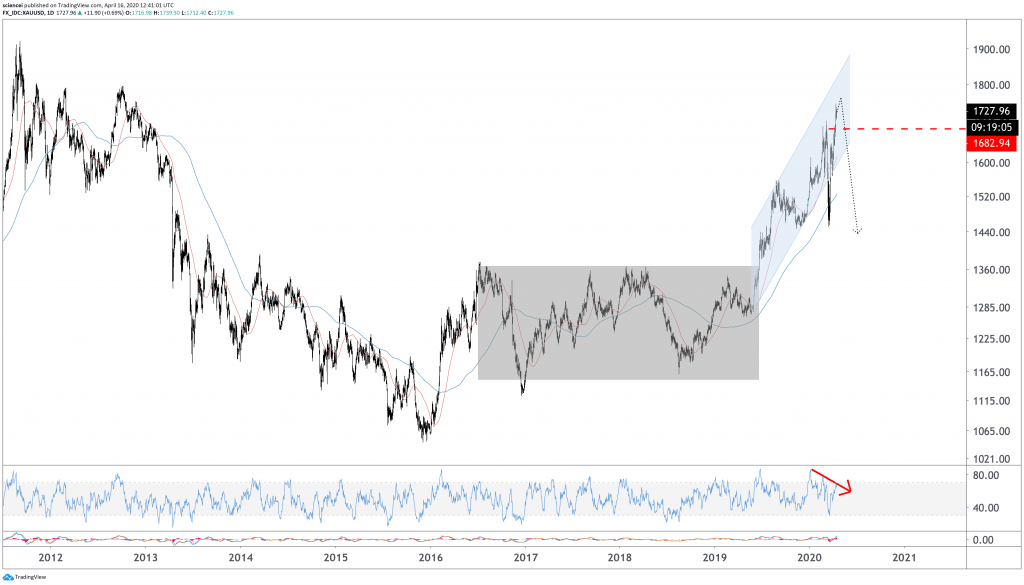Gold stood firm during the most recent turbulence across global markets. The precious metal reached a 52-week high, whereas most other assets crashed. Its precious metals siblings silver, platinum, and palladium were no exception. They sold off sharply and in line with risky assets. None of the precious metals siblings recovered their most recent highs back. They rebounded sharply but probably remained within a downside trend as their rally fades. Someone is probably wrong – either gold or the rest of the precious metals complex.

Technical, behavioral, and fundamental evidence suggests that gold is wrong. Negative real and nominal interest rates around the world channeled liquidity into gold. Financial experts cheered Bitcoin and Gold as a “must-have” safe haven during broad-based corrections in risky assets and inflationary periods. This led to elevated speculative demand for gold as sentiment and positioning data reveals. Most often, subsequent returns disappointed historically. Gold bugs see their case confirmed as the Federal Reserve expanded its balance sheet in an unprecedented move to shield the U.S. economy from the coronavirus pandemic. The expansion was quicker and larger than any other expansion in the history of the Fed. Nonetheless, a balance sheet expansion alone does not have to be inflationary. The Bank of Japan is the best example of that. Japanese policymakers were early adopters of what has been coined “Modern Monetary Policy”. They increased their balance sheet since the late 90s and accelerated that trend during recent years. Nonetheless, Japanese inflation fluctuates around zero.

There are strong fundamental headwinds for inflation today. The coronavirus pandemic sent developed economies firmly towards recessionary territory and unemployment claims skyrocketed. Such development is deflationary as job seekers are not going to demand higher wages at their next job interview. Energy and commodity prices dropped sharply and contribute to a deflationary spiral. Last but not least, the U.S. consumer lost confidence and stopped spending. Consequently, retail sales plummeted by a record level as this week’s data revealed. Yet, another deflationary factor that is rather leading to price discounts instead of price hikes. All deflationary factors described above are durable economic events that take time to resolve. Market participants will probably figure out soon that deflationary pressures are likely to channel liquidity out of gold as well because cash remains scarce. The lockdowns lead to lower incomes, while individuals and businesses depend on cash for paying bills.

The technical picture is neither supportive. Gold broke out of a sideways pattern during mid-2019. The rally carried the precious metal near its 2011 all-time high. A short-term setback unfolded during the financial turmoil earlier this year. Nonetheless, gold recovered its losses and reached another recovery high most recently. The other precious metals have not confirmed the strength in gold. Instead, gold started diverging in strength, which has not been a positive message historically but indicated nearby exhaustion of the trend. Nonetheless, its trend remains up until proven differently. Gold is likely to hold up until a sustained drop below 1,680 indicates that gold struck a significant mid-term top.
The bottom line is that the fundamental, behavioral, and technical evidence hint to a significant correction in gold. An investment case for gold as a fiat inflation hedge is most likely too early and, therefore, incorrect in the current environment. Moreover, betting on gold is among speculators’ darlings today. All in all, a risky setup for gold bugs as the mid-term trend shows early signs of exhaustion.

